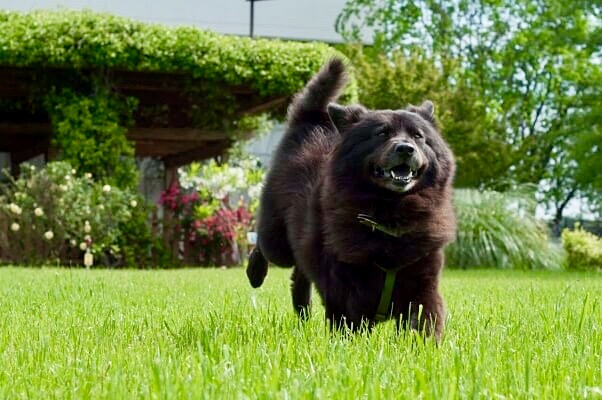Written by Scott Smith
Today I’ll be sharing about the plight of abandoned senior dogs in need of re-homing. As I was researching this issue, I was fortunate enough to connect with organizations who take senior dog rescue seriously. These groups understand that while all of animal rescue is a sensitive matter, with senior dogs it can be even more sensitive.
Most dogs reach the senior life stage at between seven and ten years old. This varies from breed to breed, as larger dogs reach old age quicker than smaller ones do. Typically, dogs that weigh less than 20 pounds are considered senior when they’re between seven and nine years old. For bigger dogs, this happens around six or seven years of age.
When senior animals lose their homes, many of them have a harder time getting adopted because they’re old. The last thing these dogs need is for people’s misconceptions to stack the decks even further against them. In order to obtain a closer look at this particular predicament for senior dogs, I reached out to organizations and people that work with these animals on a daily basis and best know their needs. After learning more about senior dogs, it should become evident that they can make incredible companions, just as good as younger ones.
Let’s begin with a story from Hope for Paws, a non-profit animal rescue operation based out of Los Angeles, California.
Back in 2015, Hope for Paws received a call about a senior dog living in a water treatment facility. Lisa Arturo and Eldad Hagar of Hope for Paws responded to the call. When they arrived, they found senior dog Mufasa surrounded by toxic chemicals. He was fearful and weak, and Eldad and Lisa knew that Mufasa needed to begin to trust them before he would let them get close.
Lisa started approaching him slowly while offering him some food. Still, Mufasa kept his distance. Eventually, Eldad had to come up from behind Mufasa to surprise him. After just a moment of resistance, the worst was over.
They say a picture speaks a thousand words. This is certainly true with the photos above, depicting Mufasa before and after his rescue. You can see Mufasa’s story on video here.
We reached out to Hope for Paws for comments, and this is what they said:
“Honestly, I don’t know how anyone could dump any animal, but a senior is just worse. That dog knows nothing but being with his family his entire life. Growing old is NOT a disease and to be discarded is just cruel, selfish and lazy! If you commit to an animal, commit. I have witnessed senior dogs going into major depressions when their family abandons them. They stop eating, lose weight and just curl up in a corner. It’s just not fair, and really shows how heartless people can be.”
Next up is Edith, who was rescued by People for the Ethical Treatment of Animals (PETA). If you ever wanted to know what dedication, faith and destiny look like together, look no further than PETA’s Jes Cochran and her senior dog, Edith. Jes Cochran, a caseworker for PETA, first started visiting Edith in 2007, when she was just a young, wriggling bundle of fluffy, black fur. Edith’s previous humans left her outside, tied to a barrel on a patch of bare dirt, but insisted on keeping her. Over the course of several years, Jes continued visiting her, regularly bringing her toys, treats, and straw for her doghouse, and showering her with affection.
One day in 2013, when Jes went to visit Edith, she was gone. Her humans had moved, and Jes feared the worst. She didn’t know where Edith had gone for three years, but in 2016 her new location was found. At that point, due to another impending move, her humans surrendered her to PETA.
Jes knew she couldn’t risk losing Edith again, and had to take her home. Today, the two are making up for lost time, and Edith is happy to be experiencing all the things that make a dog’s life wonderful, including going for long walks and car rides, play dates at the dog park, snuggling on the couch, and getting tummy rubs every day. You can read the full story and see a heart-warming video of Edith and Jes here.
PETA’s Vice President of Cruelty Investigations, Daphna Nachminovitch, has this to say about senior dogs:
“While buying a puppy fuels the homeless animal overpopulation crisis, adopting an animal saves a life, and that’s extra special for homeless senior dogs, who are roughly the equivalent of a displaced 65-year-old human whose loved ones have suddenly and mysteriously vanished. Many people can attest that senior dogs are especially grateful to those who give them a second chance at a safe and comfortable life by adopting them. And while senior dogs can require extra veterinary care and special attention, as they may walk slower or feel drafts more, they already know the ropes—from where to relieve themselves, to how to walk on a leash, and there are also few surprises in store with regard to their size, energy level, and personality.”
Frosted Faces Foundation of San Diego, California, recognized the need for an organization that specializes in senior pets, and have developed programs to guarantee aging animals the best quality of life possible. Here’s the story of just two of their rescues.
Gretel and her friend Hansel used to live in a van with a homeless woman. When she had a sudden stroke and became incapacitated, Hansel, Gretel, and eight other dogs living in the van were confiscated and brought to Riverside Shelter. From there, Hansel and Gretel were transferred to Frosted Faces Foundation.
As mentioned above, Frosted Faces has a variety of impressive initiatives that deserve special mention. Their Foster Family Program finds temporary homes for rescued pets, while Frosted Faces continues to pay for the animals’ medical expenses and supplies. The Frosted Funding Program offers financial assistance to owners whose senior pets unexpectedly become ill or develop chronic conditions. Finally, the Frosted Friend’s Boarding and Daycare Program provides a place to board senior dogs.
I myself am a human dad to six dogs. My Pomeranian, Sammy, is now twelve years old and definitely well into senior dog territory, but my life with him just keeps getting better. Though I might know he’s a senior, all he needs to know is that he’s part of my pack, and in that way he’s no different than any of my other dogs.
If Sammy could speak, I swear he’d be able to finish my sentences for me. After having shared each other’s ups and downs for years, that’s how well we know each other. As he’s aged, our bond has only grown stronger. It’s very similar with people. As time marches on, our friendships grow bigger and deeper.
The secret of Sammy’s great health is really no secret at all, other than prioritizing his happiness and activity level, and remembering that as he grows older, we mustn’t overdo the exercise. Just like with people, nice and easy walks are the best way to keep our geriatric animal companions fit.
A big part of the reason we see so many senior dogs abandoned is that animals are so often considered replaceable property, with whom people can do whatever they like. This attitude puts companion animals in danger. When you look at an animal as you would a product, then as they age, you might begin to think they’ve reached the end of their useful life.
The problem with this idea is that animals are sentient beings, whereas products are not. Equating them with replaceable and disposable property does a terrible disservice to the companionship, love, and emotional support a pet can bring to your life, as well as completely disregarding their own subjective experiences of the choices you make for them.
As animal lovers, it’s imperative we continue to fight for the rights of our non-human companions. I’d like to close this piece with words of encouragement for all the selfless, committed activists, employees, and volunteers at organizations like the ones I’ve mentioned here. These are the heroes that dedicate their lives to helping suffering companion animals.
Read the original version of this story here.
Featured image: senior dog Chance. This image and all images in this story are via ConsumersAdvocate.org.









